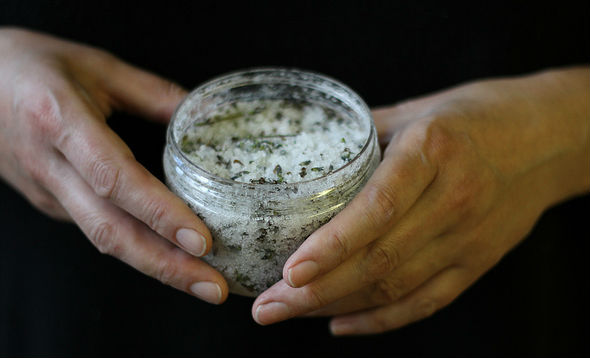That organic living is a conscious health choice
Saving Your Skin
Today’s environmentally friendly products are a far cry from homemade potions concocted in the kitchen, or niche brands solely concerned with fair trade. Eco-beauty today combines research and testing with glamour and celebrity endorsement, with premium products that truly deliver on their beauty and environmental promises. Mere “no animal testing” isn’t going to cut it for the trend-setting, game-shifting set who demand results and environmental stewardship. After all, beauty is a US$330 billion global ndustry and it makes sense to ensure that some of that dollar protects the environment while maintaining the beauty of your self.
Green beauty has come of age. Today’s environmentally friendly products are a far cry from homemade potions concocted in the kitchen, or niche brands solely concerned with fair trade. Eco-beauty today combines research and testing with glamour and celebrity endorsement, with premium products that truly deliver on their beauty and environmental promises. Mere “no animal testing” isn’t going to cut it for the trend-setting, game-shifting set who demand results and environmental stewardship. After all, beauty is a US$330 billion global industry and it makes sense to ensure that some of that dollar protects the environment while maintaining the beauty of your self.
Natural Skincare Decoded
Quick to capitalise on this trend are many beauty brands offering so-called “natural” skincare products and cosmetics, which can command a premium price. “Natural”, “green” and “botanical” are commonly used by brands seeking entry into this market, even though they lack technical definitions. Even “organic” labels can be misleading. In 2008, the US Organic Consumer Association found that most self-proclaimed “organic” personal care products sold contained ingredients that are “not certified under the USDA National Organic Program and contain only cheap water extracts of organic herbs and maybe a few other token organic ingredients for an organic veneer.” Instead, look for trusted brands that bear clear organic certification on its product labelling. The United States Department of Agriculture (USDA) Organic Certification, for example, requires a product to consist, at a minimum, 95 per cent organically produced ingredients (excluding water and salt).
Beauty’s Benefits
In addition to caring about the ingredients present in your skincare product, you should also note what’s not there. Typically, the best organic skincare products promise none of the following: Parabens, sodium laureth sulfates, synthetic chemicals, dyes, preservatives, fillers, petroleum-derived ingredients or artificial colours, and fragrances. As a result, organic skincare is gentler on the skin.
Most organic skincare brands extend their environmentally conscious approach across their entire business, employing minimal and recyclable packaging for their products and prioritising sustainability throughout their development, sourcing, production and corporate practices.
As with anything related to the quest for youth and beauty, hyperboles are bound to mark products, treatments or solutions that claim to be the answer to one’s beauty concerns. And as with most things in life, moderation and your own experience of what works are the best criteria when launching on your own eco beauty warrior path.
The Dirty List
Reconsider purchasing products that include these harmful ingredients
PRESERVATIVES
Parabens (methyl, propyl, butyl, and ethyl): Known toxins that cause allergic reactions in those with sensitive skin, yet they are still used as a preservative in many toiletries and cosmetics. Parabens are also implicated in a multitude of ill effects such as carcinogenic (cancer-causing) behaviours. Propylparaben has been shown to affect male reproductive functions.
Formaldehyde (formalin/formal and methyl aldehyde, DMDM hydantoin and imidazolidinyl urea): A toxic, colourless gas that is an irritant and a carcinogen. May cause allergic reactions, irritations, contact dermatitis, headaches and chronic fatigue. It may also trigger asthma in sensitive individuals. When combined with water, formaldehyde is used as a disinfectant, fixative or preservative. It is found in many cosmetic products, nail care systems, deodorants, shampoos and hand wash.
Natural Alternatives: Tea Tree essential oil, Thyme essential oil, Grapefruit Seed Extract, Vitamin E
EMULSIFIERS/FOAMING AGENTS
Sodium lauryl sulphate (SLS): Adversely, SLS is a common foaming agent present in about 90 per cent of products that foam, such as commercial shampoos (including baby shampoos), bubble baths and shower gels. Yet, it is also a known skin, eye and scalp irritant.
Diethanolamine/Triethanolamine (DEA/TEA): These are colourless liquids or crystalline alcohols that are used as solvents, emulsifiers and foaming agents. They work as emollients in skin softening lotions or as humectants in other personal care products, but are known to cause allergic reactions such as eye problems and dry hair and skin. They can also be toxic if absorbed into the body over a long period of time. These chemicals are already restricted in Europe due to known carcinogenic effects. DEA-based detergents have proven to be linked to a major increase in the incidence of liver and kidney cancer.
Natural Alternatives: Castile soap (olive oil based), Yucca extract, Soapwort, Quillaja Bark extract
EMOILLENTS/HUMECTANTS
Mineral oils or petrochemicals: Petroleum by-products that form an oily film over skin lock in moisture but also clog pores and keep oxygen out. Hence, they may interfere with the skin’s ability to eliminate toxins, and can encourage acne and exacerbate skin disorders such as eczema. Manufacturers use petroleum because it is cheap. Present in many products including baby oil, bath and body oils, it leaves skin feeling silky smooth but actually slows down skin function and cell development, resulting in dry skin and premature ageing.
Propylene glycol (PG): A petroleum derivative used as a humectant, it penetrates skin quickly and can weaken protein and cellular structure. It is even strong enough to remove barnacles from boats! It has been known to cause allergic reactions, contact dermatitis, acne, hives and eczema. When you see PEG (polyethylene glycol) or PPG (polypropylene glycol) on labels, beware – these are related synthetics.
Natural Alternatives: Plant oils like Jojoba, Avocado, Rosehip; natural butters like Shea, Cocoa and Jojoba
OTHER SYNTHETIC SUBSTANCES
Artificial fragrance: No international health board requires companies to list these ingredients on labels, even though reactions to artificial or synthesised fragrances include headaches, dizziness, rashes, skin discolouration, coughing and vomiting, and skin irritation.
Synthetic colourings: Commonly used to make cosmetics visually attractive, they are a common cause of skin irritation and allergic reactions. They are labelled as FD&C or D&C, followed by a colour and a number (eg FD&C Red No. 6 and D&C Green No. 6).
Natural Alternatives: Naturally-occurring colour from plant extracts and fragrance from therapeutic-grade essential oils


























_1672804154.jpg)

_1611290459.jpg)